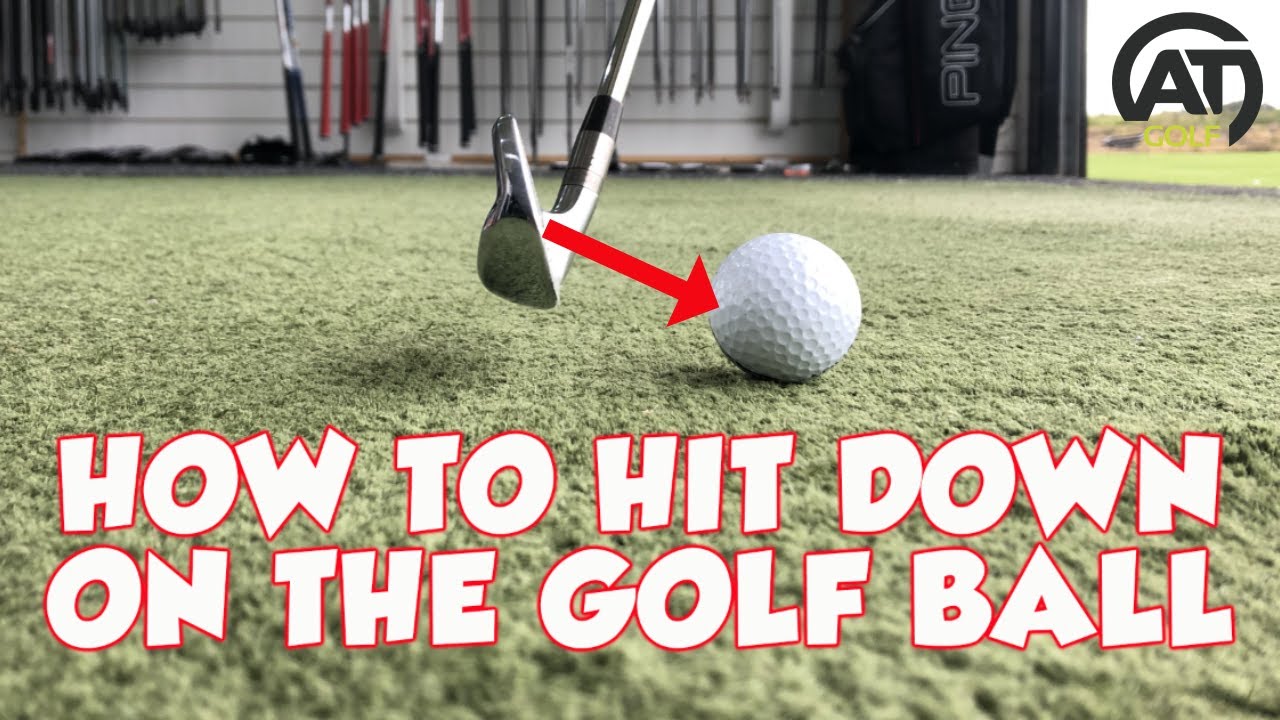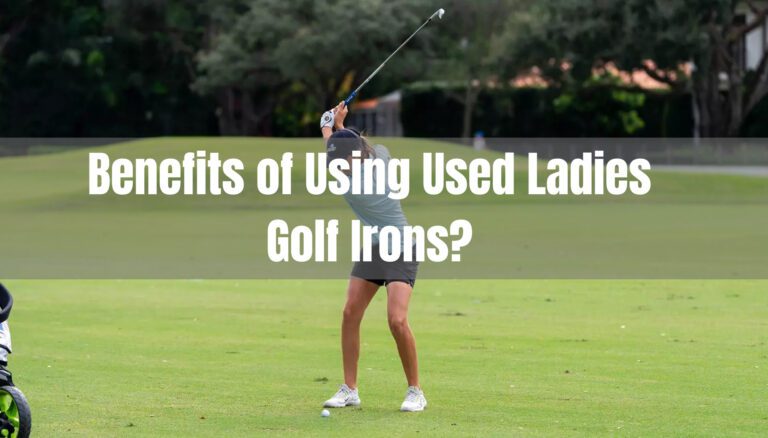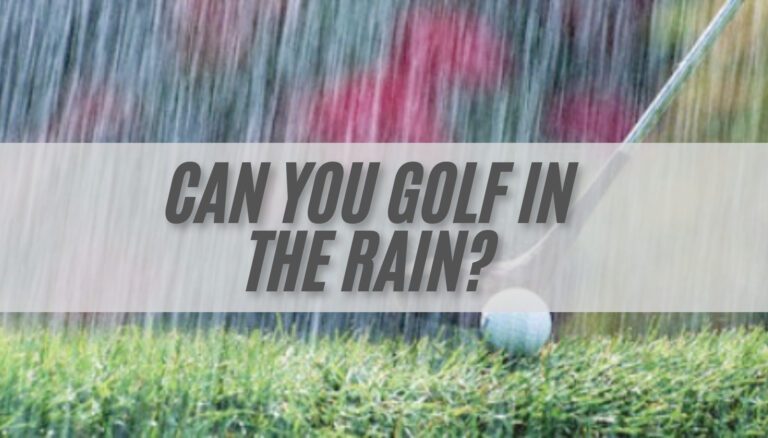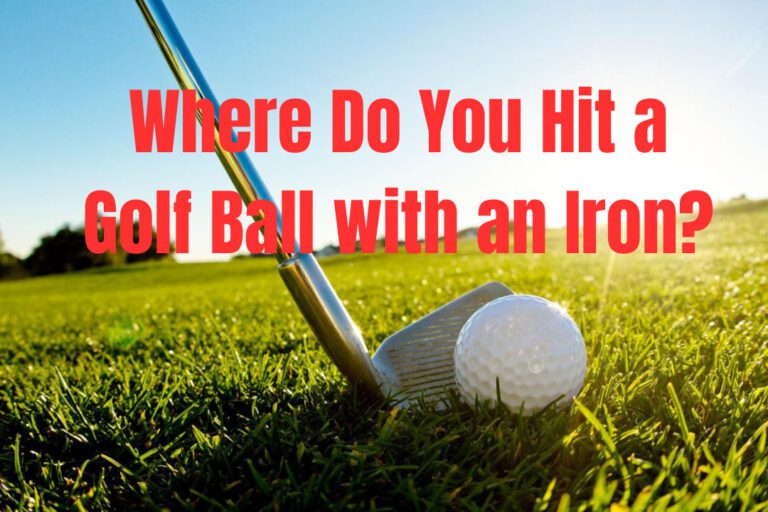How to Hit Down on the Golf Ball with Irons?
Every golfer envisions that perfect moment when the ball connects smoothly with the clubface and gracefully ascends into the sky with a touch of backspin magic!. But achieving this magic requires one key technique—hitting down on the golf ball. If you’ve ever wondered how to hit down on the golf ball with irons, you’re not alone. Many golfers, from beginners to more experienced players, struggle to master this skill. However, with the right approach and practice, it’s absolutely achievable.
In this guide, I’ll walk you through everything you need to know to hit down on the golf ball with irons, step by step. We’ll cover the correct setup, swing mechanics, and common mistakes, as well as provide actionable tips to improve your ball striking. So lets jump in and work on improving your performance with irons!
Why It’s Important to Hit Down on the Golf Ball
Before we get into the nitty-gritty of how to hit down on the golf ball with irons, let’s talk about why this technique matters so much. Hitting down on the ball creates that ideal contact that maximizes distance, accuracy, and control.
By striking down on the ball, you compress it against the turf, which adds loft and backspin. This results in a higher trajectory, more stopping power on the green, and solid, consistent strikes. Hitting down is particularly crucial when you’re using mid to short irons, as these clubs are designed to help you launch the ball high with precision.
The Correct Setup for Hitting Down on the Ball
Getting the setup right is half the battle when learning how to hit down on the golf ball with irons. If your posture, ball position, or alignment is off, it’ll be much harder to make that downward strike. Follow these steps to get into the ideal setup position:
Ball Position
The ball should be slightly ahead of the center of your stance—usually just under your left eye (for right-handed players). If the ball is too far back, you risk hitting it fat, and if it’s too far forward, you might top the shot.
Weight Distribution
Start with your weight favoring your front foot. Around 60% of your weight should be on your lead side (left foot for right-handers), with the remaining weight on your back foot. This setup encourages a descending strike as your weight naturally shifts forward during the swing.
Slight Forward Shaft Lean
Set up with a slight forward shaft lean. This means the grip of the club should be a little ahead of the ball, creating a subtle angle. This lean helps deliver a downward blow, compressing the ball and minimizing unwanted loft.
Posture
Stand tall with a straight back, bending slightly at the hips. Your arms should hang down naturally, and your knees should have a slight bend. Good posture helps maintain control and balance throughout your swing.
The Importance of the Swing Path
Once you’re set up correctly, the next step is to focus on your swing path. Hitting down on the golf ball requires a descending blow, and achieving this requires a solid understanding of your swing mechanics.
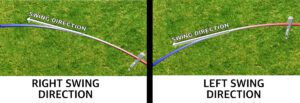
Backswing
The key to a good downswing starts with a smooth backswing. Keep it controlled and avoid over-rotating your shoulders. Your hands should remain steady, and your wrists should naturally hinge, setting the club at the top.
Transition to the Downswing
The transition from backswing to downswing is where the magic happens. This is where many golfers go wrong—they rush through this part, leading to an improper swing path. Instead, let gravity work for you. Start by shifting your weight toward your front foot, and allow your arms and club to drop naturally.
Downswing
During the downswing, focus on keeping your hands ahead of the clubhead. Your goal is to strike the ball first, then the turf—a motion often referred to as hitting “ball, then ground.” This ensures that you’re creating the downward compression needed to strike the ball solidly.
Avoiding Common Mistakes
Learning how to hit down on the golf ball with irons isn’t without its challenges. Here are some common mistakes to avoid:
Flipping the Club
Many golfers make the mistake of flipping their wrists at impact, trying to lift the ball into the air. This leads to thin or topped shots. Remember, let the loft of the club do the work—focus on hitting down, not up.
Ball Too Far Back
If the ball is too far back in your stance, you might hit the ground before the ball, resulting in a fat shot. Ensure that the ball is positioned just forward of the center.
Leaning Back at Impact
Some golfers lean back during the downswing, trying to help the ball get airborne. This results in poor contact and inconsistent strikes. Make sure your weight is shifting toward your front foot as you swing.
Drills to Help You Hit Down on the Ball
Practice is essential when learning how to hit down on the golf ball with irons. These drills will help you ingrain the correct feel and motion into your swing.
The Tee Drill
Place a golf tee in the ground about an inch in front of the ball. The goal of this drill is to make contact with the tee after hitting the ball. This encourages you to strike down on the ball and hit “ball, then ground.”
Divot Drill
Pay attention to where your divot starts. The divot should begin just after the ball and extend forward. If your divot starts before the ball, you’re hitting too far behind. If you’re not making a divot at all, you might be flipping your wrists at impact.
Impact Bag Drill
Use an impact bag (or even a pillow) to practice delivering a downward blow. Focus on keeping your hands ahead of the clubhead as you strike the bag. This drill helps reinforce the feeling of compressing the ball at impact.
Fine-Tuning Your Iron Play
Once you’ve got the basics down, it’s time to fine-tune your approach. Here are some additional tips to improve your iron play:
Tempo and Rhythm
Don’t rush your swing. Good iron shots come from a smooth, controlled tempo. Focus on making a rhythmic swing rather than trying to hit the ball as hard as you can.
Club Selection
The type of iron you’re using will affect how much you need to hit down on the ball. With shorter irons (like wedges), you’ll naturally create more of a descending blow, while longer irons (like 4 or 5 irons) require a more shallow strike.
Course Conditions
Pay attention to the turf conditions. On firm ground, you’ll want to ensure you’re taking a clean, shallow divot. On soft ground, you may need to be more aggressive with your downward strike to avoid a fat shot.
Understanding the Role of Loft and Spin
One of the main reasons you want to hit down on the golf ball is to generate the right amount of loft and spin. When you hit down on the ball, you allow the loft of the club to do its job, lifting the ball into the air with the ideal trajectory.
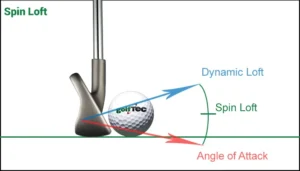
Backspin
Hitting down on the ball compresses it against the turf, producing backspin. This backspin not only helps the ball fly high but also gives it stopping power when it lands on the green.
Launch Angle
Many golfers assume that hitting up on the ball will help it get airborne, but the opposite is true. Hitting down on the ball creates the optimal launch angle for your irons, ensuring that you get the best flight path and distance.
When to Hit Down on the Ball
Hitting down on the ball is crucial for most iron shots, but there are certain situations where it becomes even more important:
Tight Lies
On tight lies, where the grass is short and there’s little room for error, hitting down on the ball helps ensure solid contact. A sweeping motion might cause you to miss the ball entirely or hit it thin.
Approach Shots
When you’re hitting an approach shot into the green, hitting down on the ball gives you better control over the shot. The added backspin helps the ball stop quickly, preventing it from rolling off the green.
Practicing Consistency
As with any golf technique, consistency is key when learning how to hit down on the golf ball with irons. The more you practice, the better you’ll get at maintaining solid contact and striking the ball cleanly.
Focus on Repetition
Spend time on the range hitting irons, paying close attention to your ball position, weight shift, and swing path. The more you repeat the correct movements, the more they’ll become second nature.
Get Feedback
Consider using a launch monitor or working with a golf instructor to get feedback on your swing. These tools can help you identify areas for improvement and ensure you’re on the right track.
Conclusion: Master the Downward Strike for Better Iron Play
Learning how to hit down on the golf ball with irons is a game-changing skill. By focusing on the correct setup, swing mechanics, and consistent practice, you’ll see dramatic improvements in your ball striking. Remember, it’s not about lifting the ball into the air—it’s about compressing it and letting the club’s loft do the work.
With this comprehensive guide, you’ve got all the tools you need to start hitting down on the ball and improving your iron shots. Keep practicing, and before you know it, you’ll be hitting crisp, clean shots that soar through the air and stop dead on the green.

